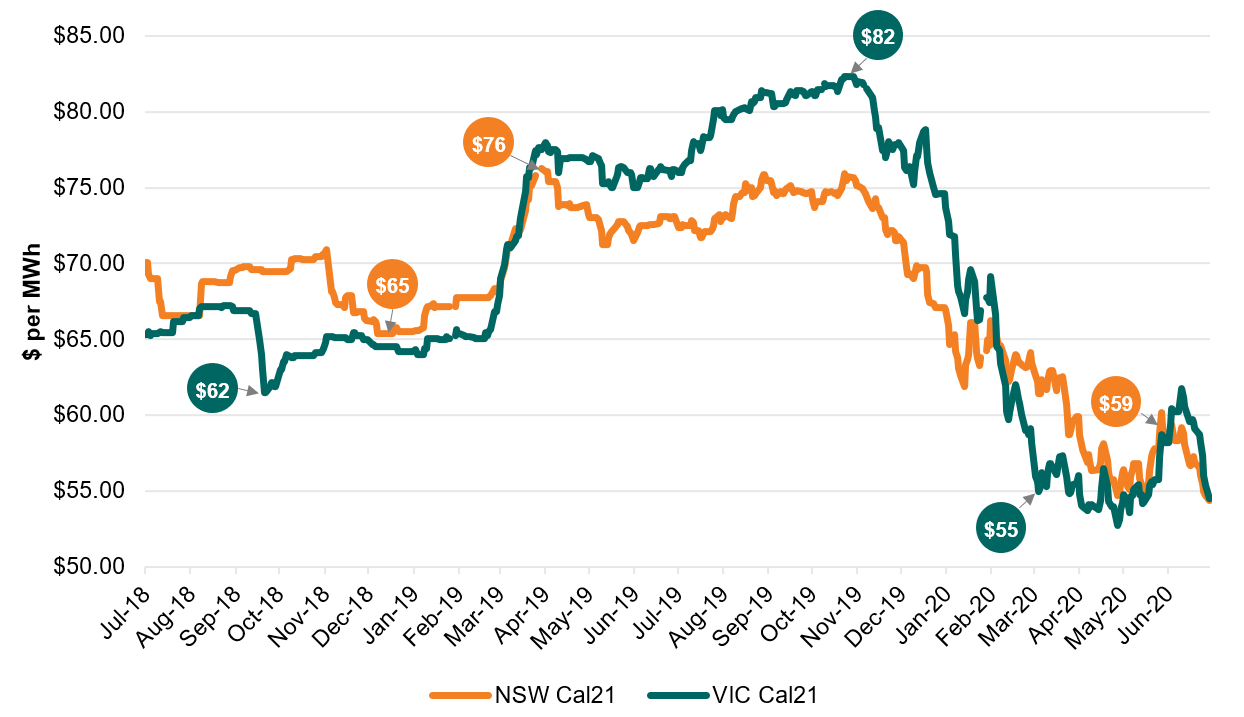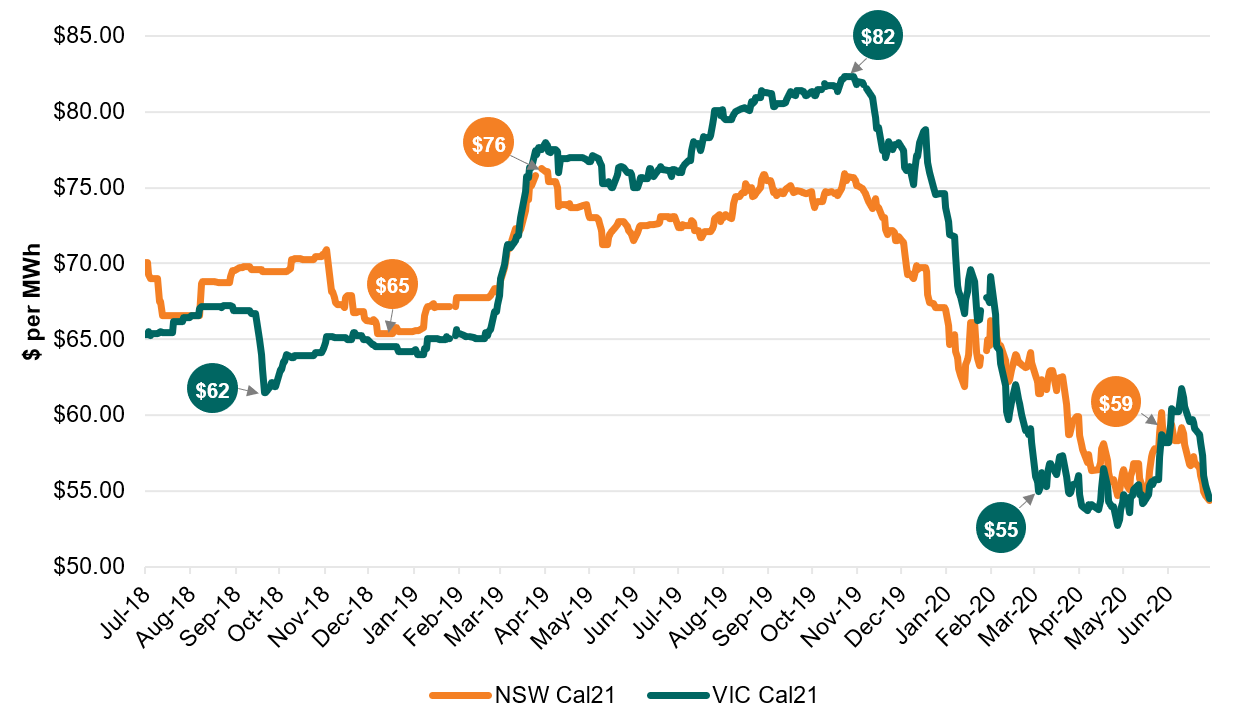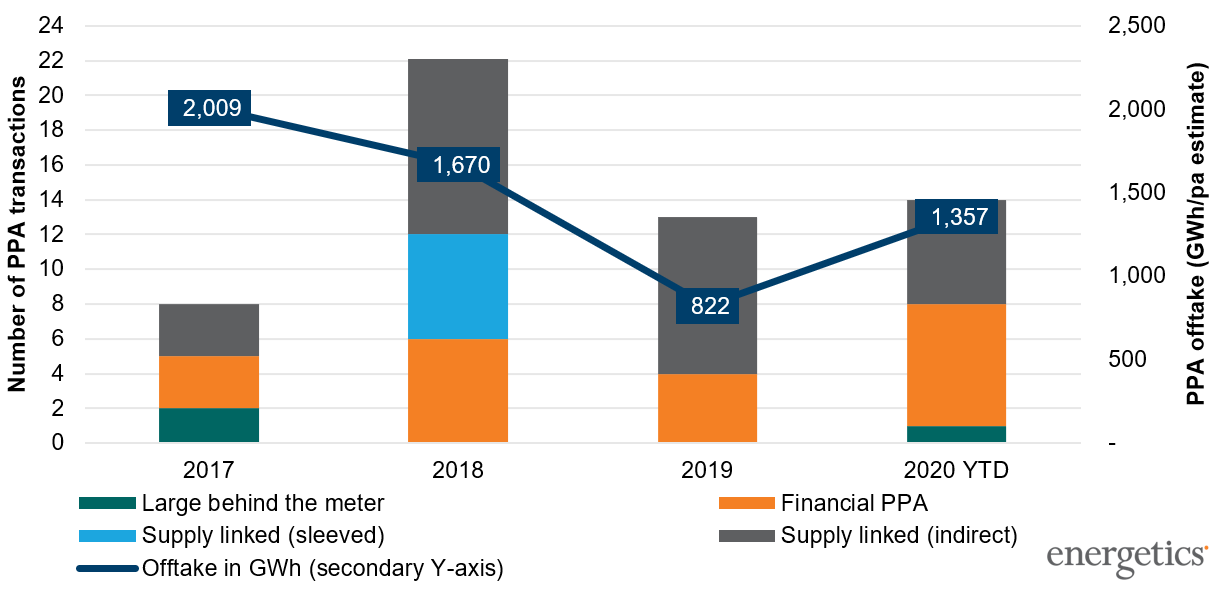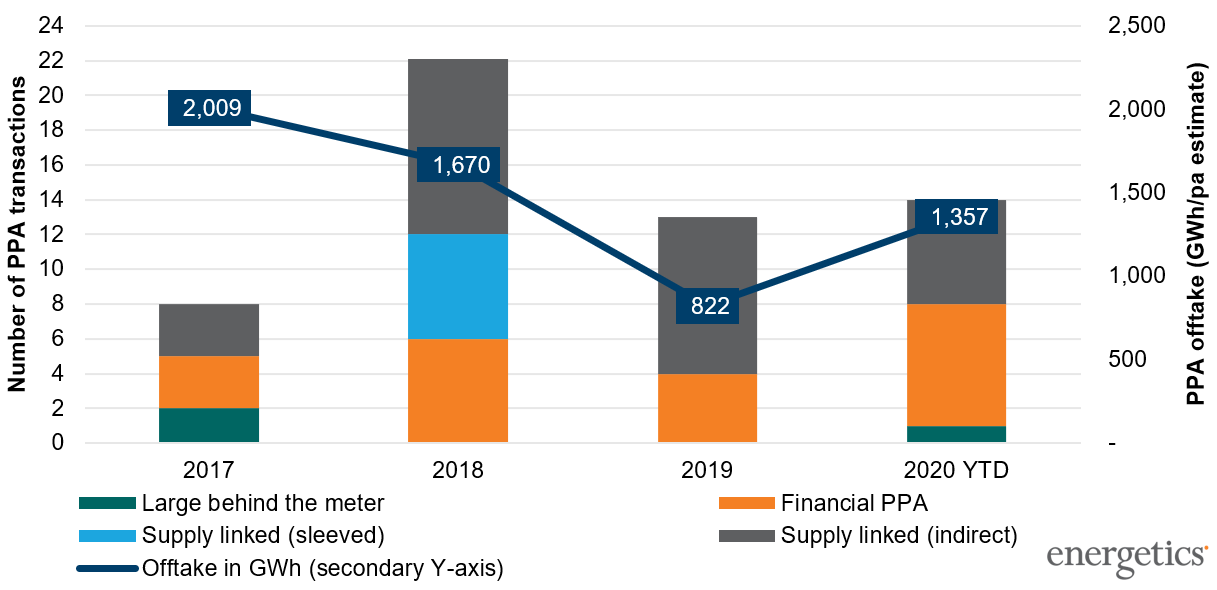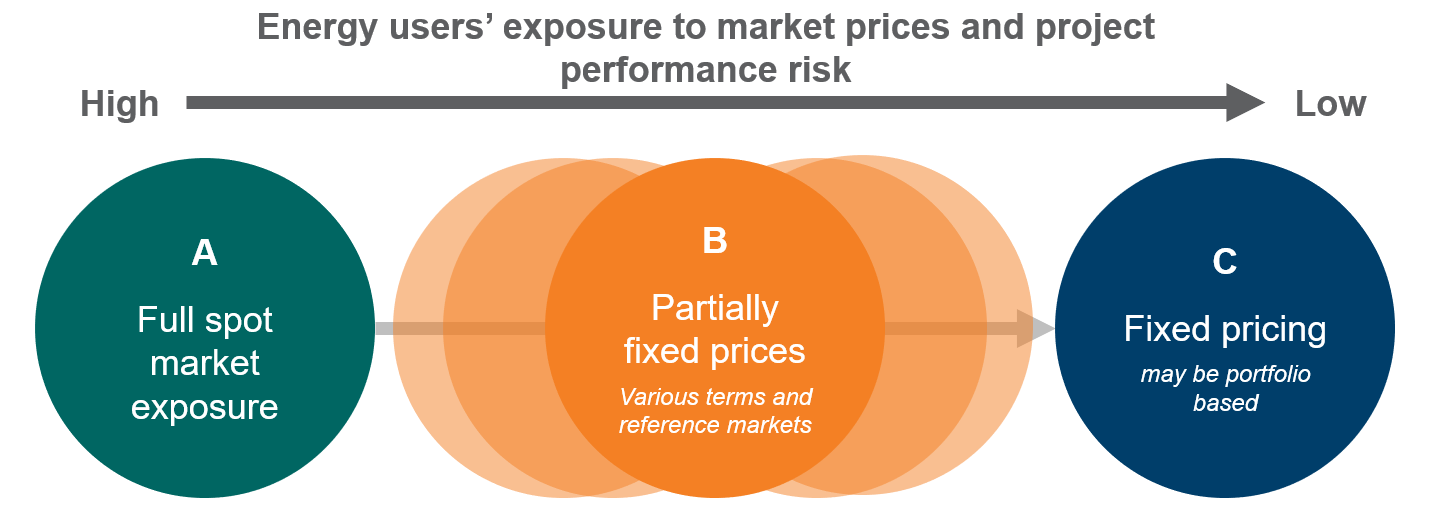In 2020 more and more businesses and organisations are seeking pathways to emissions reductions. A commitment to 100% renewable energy is a key step in the journey to net zero emissions; these are typically supported by an off-site corporate renewable power purchase agreement (PPA) or a contract for renewable energy certificates.
Off-site renewable energy contracting strategies do not reduce the need to drive down on-site emissions through initiatives such as rooftop solar, energy efficiency and fuel switching. However, physical limitations often mean that organisations must look to off-site options to eliminate emissions associated with electricity consumption.
In a market that recently saw electricity prices drop in response to, amongst other factors, the fall in demand as economic activity slowed due to the COVID-19 crisis, Energetics shares our views on the trends in off-site renewables, contracting strategies and risk management now and into the medium and long term.
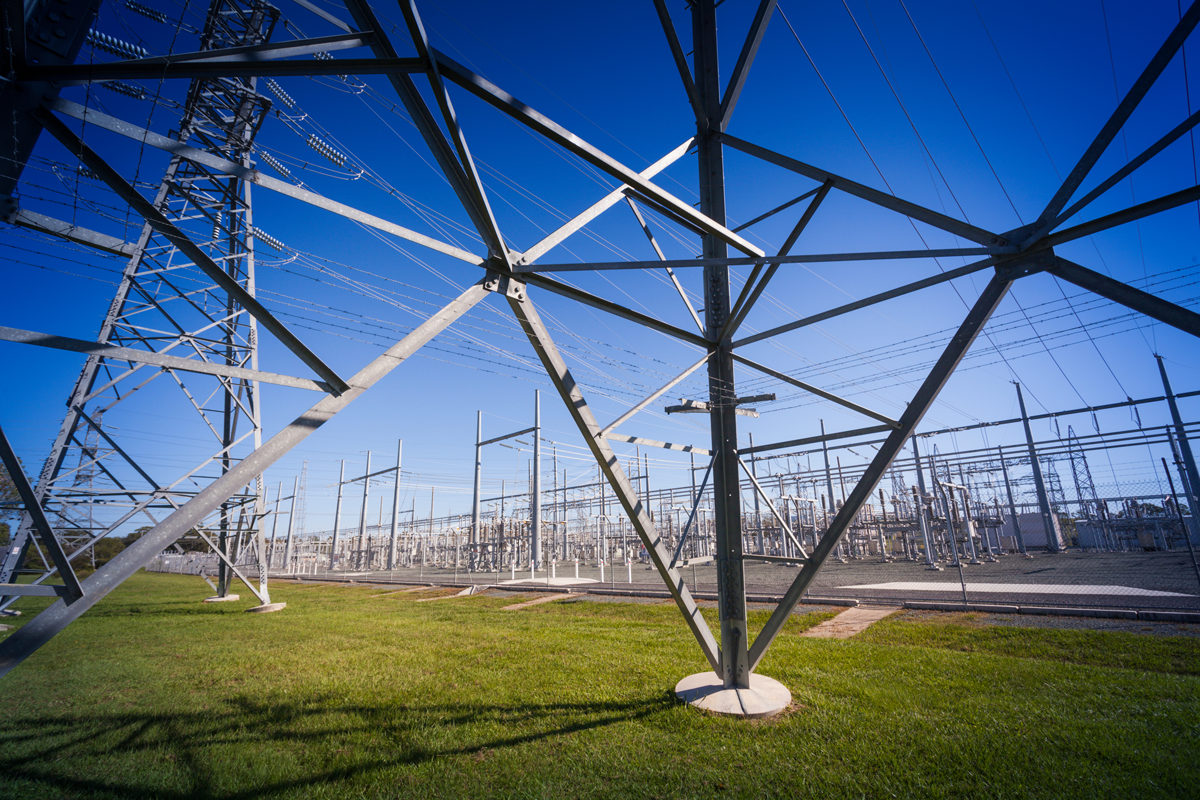
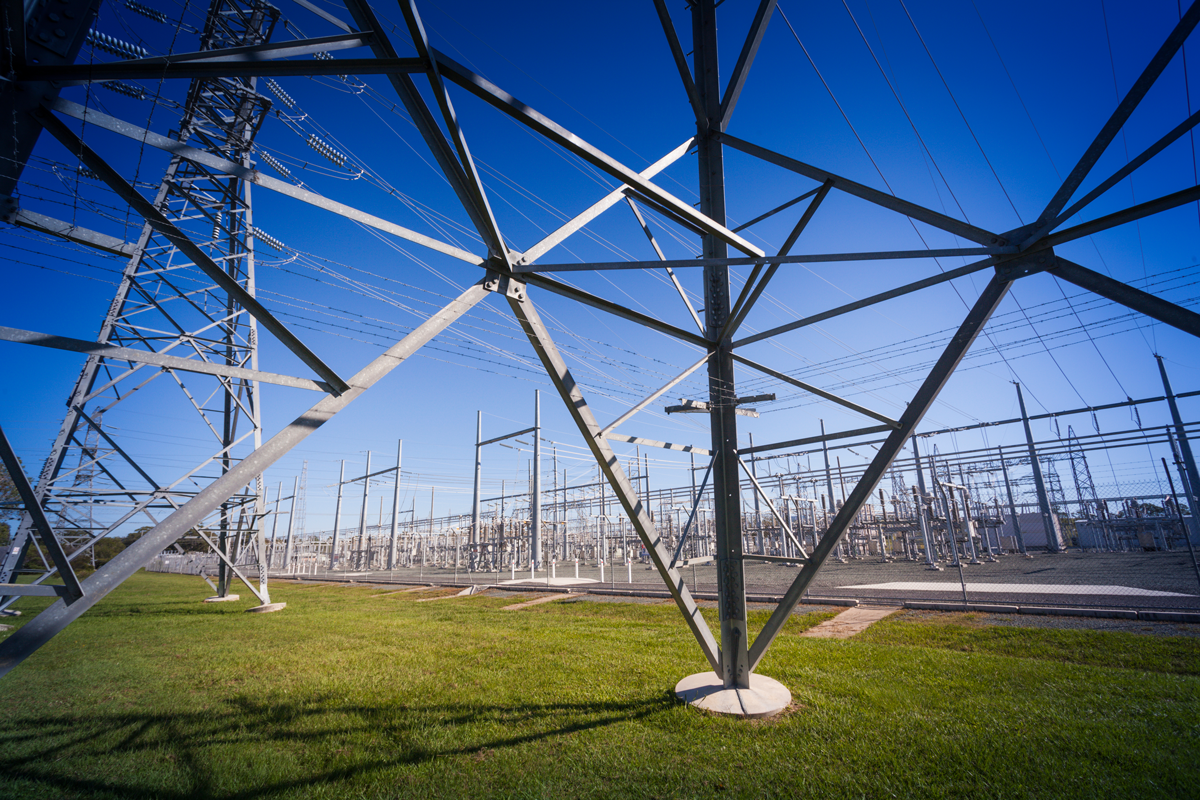
Is now a good time to approach the market for a PPA? What are the considerations that must be balanced?
If your business is seeking greater budget certainty in the medium and long term, doing nothing is not an option. This is well illustrated in Figure 1 by price movements in the futures market which is a key determinant of the rates under a standard retail electricity supply agreement.
Figure 1: NEM Cal21 base electricity futures
It is not possible to ‘time the market’, but the date your organisation elects to approach the market to lock in prices for a new retail electricity supply agreement can have a material impact on your rates for the next two to three years. The challenge is well described in the following example (illustrated above). Buyers who contracted in November 2019 for power to be delivered during calendar year 2021 in Victoria, will likely pay more than 30% above those who contracted for the same load in either October 2018 or March 2020. Similar variability – albeit less accentuated – would be seen in NSW and other states.
Why have we seen such low prices over recent months? Will prices remain low?
There are a number of factors, but significant drivers are the lower demand for electricity during the COVID-19 shut down which put downward pressure on prices; as well as suppressed natural gas prices on the spot markets.[1]
Although natural gas prices may continue to trend at current lower levels for some time, demand is likely to rebound over time and with it, a likely recovery in prices – but the question remains, in which price band will prices trend in the medium to long term?
The challenges to the electricity system in the near and long term posed by aging thermal power generators are not abating, exacerbated by extreme weather conditions. Whilst, the collective economic impacts of COVID-19 are expected to slow down investment in new renewable capacity, it is hard to estimate the relative downward pressure of lower gas prices and demand on electricity prices, vis-à-vis the upward pressure on electricity prices due to a slowdown in investment in new generation capacity to replace the aging thermal generation fleet across much of the NEM.
So, electricity market conditions remain challenging. Consequently, a well-designed corporate renewable PPA remains a key consideration in any long-term energy market risk management strategy and emissions reduction strategy. However, buyers are advised to carefully consider their options and seek expert advice to evaluate PPA and other contracting opportunities.
Retailer activity has increased, opening up opportunities for more organisations to consider renewable PPAs
The Australian market for renewable PPAs has been evolving rapidly since 2017, when early movers concluded a number of large transactions. Whilst retailers intermediated four of these early transactions, they constituted only 15% of the off-take volume (see Energetics’ corporate renewable power purchase agreement deal tracker). During 2018 and 2019, however, retailer intermediated deals accounted for the majority of deals and more than 50% of the offtake volume in both years.
The interest from retailers in supporting the renewable PPA market is great news for organisations which have been interested in investigating a long term renewable energy offtake agreement but have found PPAs operationally challenging[2]. For such companies, cash flows related to market settlement may be too variable, the size of the offtake required to support a financial PPA may be too large, or they are not prepared to take on the risks and / or are unable to enter into contracts that potentially expose them to derivative accounting and Australian Financial Service Licence obligations.
Figure 2: Volume of corporate renewable PPA transactions (excluding LGC only offtakes)[3]
It is worth noting, as seen in Figure 2, that early deal flow in 2020 has seen a resurgence in financial PPAs (noting too, in Figure 2, Shell’s large behind the meter[4] transaction). However, Energetics is aware that there are currently other financial and supply-linked PPAs in the market at various stages of development, making it too early to predict whether the 2018 and 2019 trend of retailer intermediated renewable PPAs dominating the market will continue in 2020.
There is no standard ‘PPA product’ offer from retailers
The 35 supply linked PPA transactions included in Figure 2 were intermediated by 10 different retailers. Unlike financial PPAs, there is limited standardisation in supply linked renewable PPA market conventions with many retailers viewing their offers as a structured product. Consequently, the contractual arrangements and pricing models varied across these transactions – even for the same retailer.
Similar to a standard retail agreement, most supply linked PPAs provide load following electricity (or firm supply) to power operations. However, the pricing models usually differ based on the level of exposure to the performance of the renewable energy project(s) underpinning the supply of LGCs and the exposure to spot and / or futures market prices (see Figure 3). The model along this spectrum that is best for your organisation depends on your business risk tolerance and strategic drivers, such as sustainability goals, requirements for budget certainty and sensitivity of business performance to electricity cost.
Figure 3: Spectrum of observed supply linked renewable PPA pricing models
Selecting the best price model and comparing offers remains extremely complex
The diversity of models makes evaluation of competing offers on a like-for-like basis extremely complex. For example, to estimate the risk-adjusted value of some offers requires, amongst other considerations, a long term view of the spot and / or futures market prices, generator profile correlation with the buyer’s consumption profile and the impact network constraints may have on the project's output. Comparing such an offer against a fully fixed price model (Type C in Figure 3) necessitates consideration of how the buyer’s electricity requirements may change over time, sensitivity of the arrangement to the renewable energy offtake volume risk, as well as how electricity market prices may evolve.
Whilst long term prices are very uncertain, forming a plausible view of how electricity markets may evolve is essential to support your PPA evaluation. This requires robust evidence-based scenarios to support long term price forecasts at a trading interval level. Using a single annual price estimate will not enable you to estimate the value of the output from a project. The value of a MWh produced will vary significantly between projects, depending on the project’s production profile. Furthermore, scaling historical spot prices to generate a market price forecast to evaluate renewable PPAs is inappropriate given the unprecedented pace of transformation of the electricity market expected over the next decade.
So, for energy market dynamics, the past is a very poor representation of the future.
Energetics’ recommendations
The uncertainty of long-term prices and the complexity of assessing project and market exposed models has led some customers to believe that locking in fixed prices for the long term is the solution. This may not be the best option. As illustrated over the last couple of months, prices may drop and could trend for some time well below historical levels. A fully fixed price model could result in energy users being locked in for well above the market price for a prolonged period of time.
It is therefore recommended that buyers assess whether there is value in leaving at least a portion of their load exposed to the market, either through the selection of pricing models or changing the volume of electricity contracted under different contractual arrangements.
References
[1] Gas prices influence the cost of peak electricity.
[2] Noting the difference between a supply linked PPA and a financial PPA. With a financial PPA no power is delivered to the buyer. Instead the buyer and seller agree on a contract for difference, to reflect the difference between the negotiated fixed price and the market spot price. The project receives the fixed price and the buyer is exposed to the 'floating leg'. A supply linked PPA is where the retailer as the seller supplies power directly to the buyer.
[3] Note that the Energetics GWh tracker focussed on deals with an offtake of greater than 10GWh pa. However, there are some transactions facilitate by retailers that are as small as 1GWh. This graph also includes some deals concluded by Energetics’ clients, but not yet announced publicly by our clients at the time of publishing the article. Official numbers published on the Energetics PPA tracker may therefore vary somewhat from the above figure.
[4] 120 MW capacity
